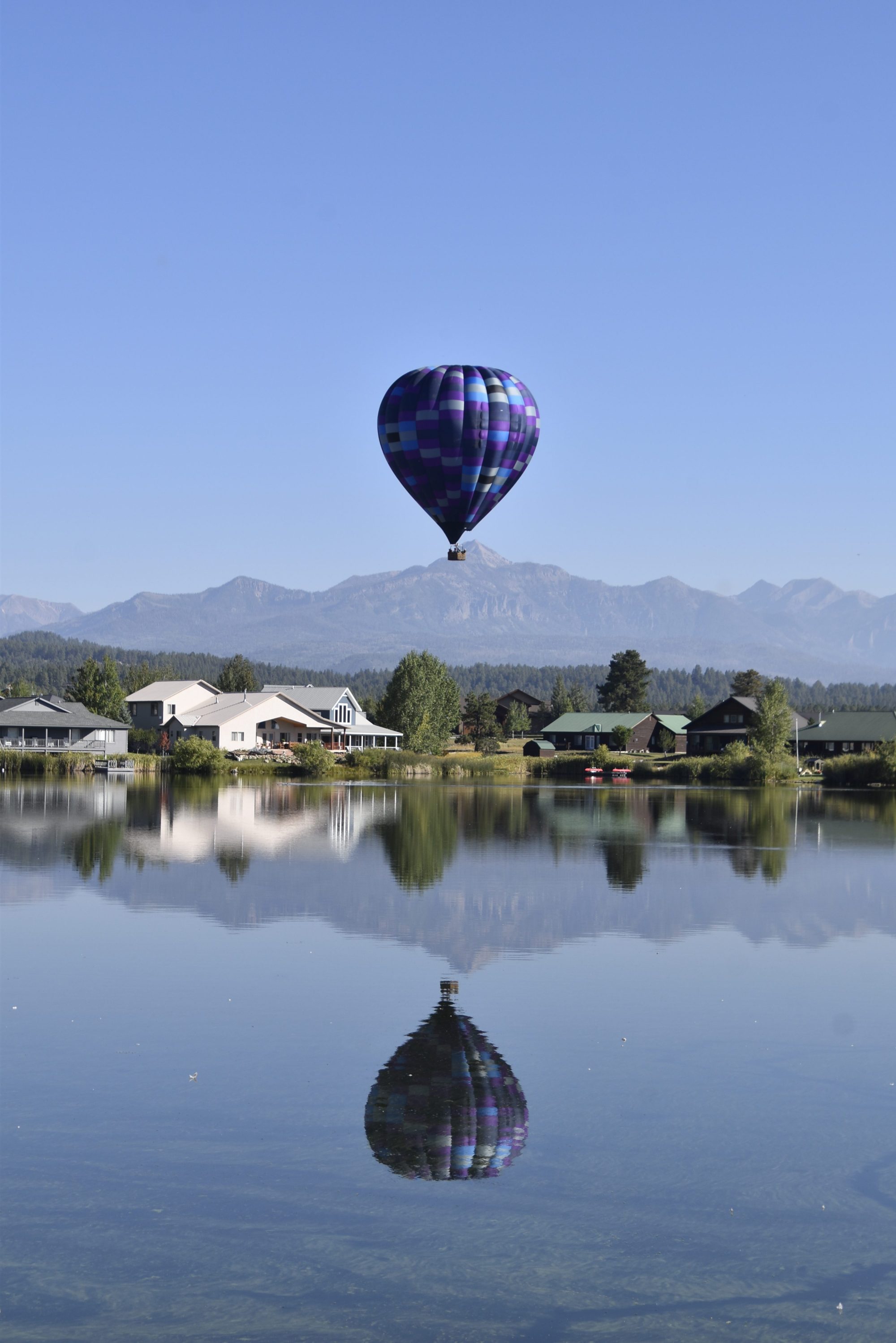HOT AIR BALLOONING AND WEATHER

Why Hot Air Balloons Can Only Fly in Nice Weather in Pagosa Springs
Hot air ballooning is a magical experience, especially in a place as beautiful as Pagosa Springs, Colorado. Floating gently near the San Juan Mountains and taking in the breathtaking scenery is an unforgettable adventure. However, as peaceful and serene as ballooning is, there’s a lot that goes on behind the scenes to make sure each flight is safe and enjoyable. One of the most important factors in hot air ballooning is the weather. You may have noticed that hot air balloons only fly in good weather conditions, and there’s a very good reason for that, especially in a place like Pagosa Springs.
Why Weather Matters in Hot Air Ballooning
Unlike airplanes, which are equipped with engines, hot air balloons are at the mercy of the wind and weather. The balloon moves with the wind, and pilots have limited control over where it goes. This makes the weather a critical factor in determining whether it’s safe to fly.
Here’s why flying in nice weather is essential:
- Wind Conditions: Hot air balloons rely on gentle, steady winds. Winds that are too strong can make controlling the balloon difficult, and gusty winds can cause turbulence, making the flight dangerous for both passengers and the balloon itself. Ideal wind speeds for ballooning are typically less than 8-10 mph. If the wind is too strong, the balloon could land hard, which poses a risk to both the passengers and the surrounding environment.
- Visibility: Clear skies or minimal cloud cover are ideal for hot air balloon flights. Pilots need good visibility to navigate and avoid obstacles like trees, mountains, and buildings. Fog, heavy clouds, or rain can limit a pilot’s ability to see clearly, making it unsafe to fly. Additionally, balloons don’t fly in rain because the heat from the burner can cause the balloon’s fabric to weaken if it becomes wet.
- Temperature: Hot air balloons rely on the difference between the temperature inside the balloon and the outside air to generate lift. Cooler temperatures are ideal because the hot air inside the balloon provides better lift in cooler air. This is why most balloon flights take place early in the morning or late in the evening when the air is cooler and more stable.
- Storms: Thunderstorms are a big no-go for hot air ballooning. The unpredictable nature of thunderstorms, including high winds, lightning, and updrafts, makes flying extremely dangerous. Pilots keep a close eye on weather forecasts and radar to avoid any chance of a storm during a flight.
Geographical Challenges in Pagosa Springs
In addition to weather, Pagosa Springs presents some unique geographical challenges for hot air balloon pilots. Nestled near the San Juan National Forest and surrounded by rugged mountain terrain, Pagosa Springs offers stunning views but also requires careful navigation.
- Mountain Winds: The San Juan Mountains create what are known as mountain winds—winds that can shift rapidly as they move around the peaks and valleys. These winds are often unpredictable and can change direction quickly, making it challenging for balloon pilots to maintain control. Pilots must carefully plan flights to avoid areas where mountain winds could become dangerous.
- Forest Proximity: With the San Juan National Forest nearby, pilots must be particularly cautious about where they land. Balloon flights are often planned to avoid densely forested areas, which could make landing difficult. Open areas, like meadows and valleys, are preferred for landing, but the proximity of the forest adds an extra layer of complexity to flight planning.
- Altitude: Pagosa Springs sits at an elevation of over 7,500 feet, and flying in higher altitudes presents its own set of challenges. The air is thinner at higher altitudes, which can affect the balloon’s lift and the performance of the burner. Pilots need to account for this when planning flights and adjusting their altitude throughout the journey.
Why Safety Comes First
At Pagosa Adventure, safety is our top priority. While it’s disappointing when flights have to be canceled due to weather, it’s always done in the best interest of our passengers and crew. Our pilots are highly trained in understanding weather patterns, wind conditions, and geographical challenges, and they make careful decisions to ensure every flight is not only enjoyable but safe.
The Magic of Morning Flights
Most hot air balloon flights in Pagosa Springs happen early in the morning, just after sunrise. This is because morning air is typically cooler and more stable, making for a smoother, safer flight. As the day progresses and the sun heats the ground, thermal activity (rising pockets of warm air) can cause unpredictable winds, making flying less safe.
In the morning, the air is calm, the winds are gentle, and the sun’s soft light casts a golden glow over the landscape. It’s the perfect time to experience the beauty of Pagosa Springs from the sky, with the added bonus of optimal flying conditions.
Conclusion
While flying in nice weather may seem like a simple requirement, it’s absolutely essential for the safety and enjoyment of hot air ballooning. In a place like Pagosa Springs, where the geography adds extra challenges, flying in the right conditions is even more important. Our team at Pagosa Adventure is committed to providing you with the best—and safest—experience possible.
So, the next time you book a hot air balloon flight, remember that waiting for the perfect weather isn’t just about comfort—it’s about making sure your adventure is as magical and safe as it can be. We can’t wait to take you on a journey above the stunning landscape of Pagosa Springs

- Posted in:
- Tags:
- Activities for kids in Pagosa Springs
- Activities near me
- Balloon rides in Pagosa Springs
- Ballooning
- Balloons in Durango Colorado
- Boat in Pagosa Springs
- Colorado River Rafting
- hot air balloon
- Hot air balloon rides
- Hot Air Balloon rides in Colorado
- Hot Air Balloon Rides in Pagosa Springs
- Pagosa Spings
- Things to do In Pagosa Springs

